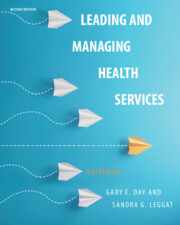Refine search
Actions for selected content:
46 results
16 - The Artistic Identity
- from Part IV - Realities
-
- Book:
- The Artist's Life
- Published online:
- 04 November 2025
- Print publication:
- 20 November 2025, pp 113-122
-
- Chapter
- Export citation
16 - Networking
- from Part 3 - Engages Others
-
-
- Book:
- Leading and Managing Health Services
- Published online:
- 15 August 2025
- Print publication:
- 28 August 2025, pp 177-188
-
- Chapter
- Export citation

Leading and Managing Health Services
-
- Published online:
- 15 August 2025
- Print publication:
- 28 August 2025
-
- Textbook
- Export citation
3 - Publishing for Professional Advantage
-
- Book:
- Selling Sexual Knowledge
- Published online:
- 24 June 2025
- Print publication:
- 10 July 2025, pp 90-120
-
- Chapter
-
- You have access
- Open access
- HTML
- Export citation
Chapter 1 - What is it to become a teacher?
- from Part 1 - Introduction to education
-
-
- Book:
- Introduction to Education
- Published online:
- 14 June 2025
- Print publication:
- 02 June 2025, pp 2-26
-
- Chapter
- Export citation
Representation of women in scientific subjects: overview of systematic reviews investigating career progress in academic publishing with a focus on mental health – ERRATUM
-
- Journal:
- BJPsych Open / Volume 11 / Issue 3 / May 2025
- Published online by Cambridge University Press:
- 07 April 2025, e82
-
- Article
-
- You have access
- Open access
- HTML
- Export citation
Chapter 10 - Aspirations
-
- Book:
- Autistics in Academia
- Published online:
- 06 March 2025
- Print publication:
- 13 March 2025, pp 142-151
-
- Chapter
- Export citation
Representation of women in scientific subjects: overview of systematic reviews investigating career progress in academic publishing with a focus on mental health
-
- Journal:
- BJPsych Open / Volume 11 / Issue 2 / March 2025
- Published online by Cambridge University Press:
- 12 March 2025, e49
-
- Article
-
- You have access
- Open access
- HTML
- Export citation
Introduction
-
- Book:
- Leon Battista Alberti in Exile
- Published online:
- 07 February 2025
- Print publication:
- 06 March 2025, pp 1-6
-
- Chapter
- Export citation
Canadian Leader in Pediatric Neurology: Dr. O. Carter Snead III
-
- Journal:
- Canadian Journal of Neurological Sciences / Volume 52 / Issue 4 / July 2025
- Published online by Cambridge University Press:
- 25 October 2024, pp. 555-558
-
- Article
-
- You have access
- HTML
- Export citation
Moving from psychiatric practice in the UK to Australia: some personal reflections
-
- Journal:
- BJPsych Bulletin / Volume 49 / Issue 3 / June 2025
- Published online by Cambridge University Press:
- 18 September 2024, pp. 174-177
- Print publication:
- June 2025
-
- Article
-
- You have access
- Open access
- HTML
- Export citation
Crisis as opportunity: legal career paths at two historical turning points in Hong Kong
-
- Journal:
- Law & Society Review / Volume 58 / Issue 3 / September 2024
- Published online by Cambridge University Press:
- 30 October 2024, pp. 481-504
- Print publication:
- September 2024
-
- Article
-
- You have access
- Open access
- HTML
- Export citation
45 - The Essay in the Career of the Contemporary British Novelist
- from Part V - The Essay and the Essayistic Today
-
-
- Book:
- The Cambridge History of the British Essay
- Published online:
- 31 October 2024
- Print publication:
- 04 July 2024, pp 681-695
-
- Chapter
- Export citation
Chapter 1 - The Life
- from Part I - Life and Times
-
-
- Book:
- Goethe in Context
- Published online:
- 16 May 2024
- Print publication:
- 23 May 2024, pp 9-19
-
- Chapter
- Export citation
Chapter 12 - Narrative Work Psychology
-
- Book:
- Applied Narrative Psychology
- Published online:
- 02 November 2023
- Print publication:
- 16 November 2023, pp 151-156
-
- Chapter
- Export citation
Professor David Skuse: a gentleman and a scholar
-
- Journal:
- BJPsych International / Volume 20 / Issue 4 / November 2023
- Published online by Cambridge University Press:
- 20 November 2023, pp. 78-79
- Print publication:
- November 2023
-
- Article
-
- You have access
- Open access
- HTML
- Export citation
Introduction
-
-
- Book:
- The Cambridge Companion to <i>Gulliver's Travels</i>
- Published online:
- 05 October 2023
- Print publication:
- 19 October 2023, pp 1-8
-
- Chapter
- Export citation
Linking high-performance work systems to work engagement: exploring the mediating role of perceived internal marketability
-
- Journal:
- Journal of Management & Organization / Volume 31 / Issue 4 / July 2025
- Published online by Cambridge University Press:
- 09 June 2023, pp. 1755-1767
-
- Article
- Export citation
37 - Working Outside Academia
- from Part V - Tips for a Successful Research Career
-
-
- Book:
- The Cambridge Handbook of Research Methods and Statistics for the Social and Behavioral Sciences
- Published online:
- 25 May 2023
- Print publication:
- 08 June 2023, pp 793-816
-
- Chapter
- Export citation
3 - Do You Have the Personal Qualities to Be a Community Consultant?
-
- Book:
- Guidebook to Community Consulting
- Published online:
- 16 March 2023
- Print publication:
- 23 March 2023, pp 38-52
-
- Chapter
- Export citation
